Maronite Patriarch Beshara al-Rahi condemned on Sunday the recent clash in the Bekaa town of Arsal that left two army officers …
President Michel Suleiman on Sunday said that “no one should harbor armed men,” stressing that the killers of Major Pierre Bashaalani …
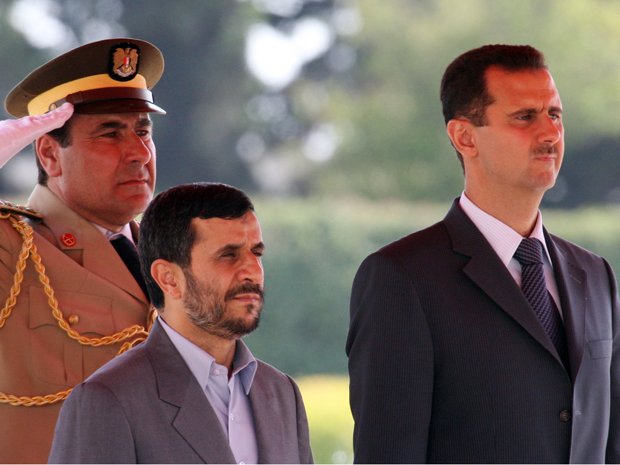
Much like the air campaign against Hamas targets inside the Gaza strip, Israel's airstrike in Syria looks like a well-timed tactical move—and the confusing media reports regarding the attack may be part of the plan.The Jerusalem Post reports that a Western diplomatic source told Iraqi daily Azzaman that the attack took place more than 48 hours before it was leaked by Israel Furthermore, the source said the reports about a strike on a convoy carrying weapons into Lebanon were probably meant to divert attention away from the operation's main objective: To use F-16 aircraft to fire at least eight guided missiles at a military research center near Damascus.
On Wednesday U.S. officials — who said they were given forewarning of the strike — told The Wall Street Journal and other outlets that the Israelis were targeting a convoy of trucks allegedly carrying Russian-made SA-17 missiles to Hezbollah. Syria insisted that the reports about the convoy attack were "baseless," and that the real target was a military research center in Jamraya, which lies about three miles from Damascus and eight miles from the Lebanese border.
Maj. Gen. Adnan Salo, a former head of the chemical weapons unit in the Syrian Army who defected and is now in Turkey, told The New York Times that the complex produces both conventional and chemical weapons. The Azzaman source said that the complex is heavily fortified and houses experts from Russia and has been guarded for years by at least three thousand Iranian Revolutionary Guards, adding that the Guards suffered heavy casualties in the strike. The Syrian rebel commander in the Damascus area told Reuters that rebels attacked the facility with "six 120 millimeter mortars" at about the same time that Israeli planes bombed the convoy. But there has been no confirmation of the convoy attack besides unnamed diplomatic and rebel sources saying it occurred three miles south of where the main Damascus-Beirut highway crosses the border into Lebanon.
Normal 0 false false false EN-US X-NONE X-NONE MicrosoftInternetExplorer4
/* Style Definitions */ table.MsoNormalTable {mso-style-name:"Table Normal"; mso-tstyle-rowband-size:0; mso-tstyle-colband-size:0; mso-style-noshow:yes; mso-style-priority:99; mso-style-qformat:yes; mso-style-parent:""; mso-padding-alt:0in 5.4pt 0in 5.4pt; mso-para-margin-top:0in; mso-para-margin-right:0in; mso-para-margin-bottom:10.0pt; mso-para-margin-left:0in; line-height:115%; mso-pagination:widow-orphan; }
The Hariri Political Dynasty after the Arab Spring
WARD VLOEBERGHS
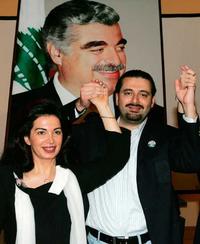
Quite symbolically, in September 2011, the Rafiq Hariri DVD box on offer in downtown Beirut’s Virgin Megastore came at a discounted price. Next door, the flowers at Hariri’s gravesite were no longer being refreshed every couple of days; instead artificial flower arrangements had been planted. Worse, perhaps, in January 2012 Saad Hariri (Rafiq’s son and political successor) broke a leg during asking holiday in the French Alps. Obviously, a year after Saad Hariri’s government had been ousted from power, the juvenile ‘Hariri dynasty’ seemed to have hit an adolescent crisis. Plagued by political rivals, financial troubles and dangerously lingering Syrian crisis, Saad Hariri was spending most of his time between Paris and Riyadh. During the past two decades (1992-2012), the Hariri family has continuously wielded governmental power in Lebanon, except for a short spell between December 1998 and October 2000 and an even shorter period between October 2004 and June 2005. Their conspicuous absence from power in the cabinet since early 2011, which could last until the parliamentary elections of 2013, constitutes a remarkable rupture with the past .In order to understand this dramatic change, this article intends, first, to analyze the birth of a dynasty and, second, the reasons behind its apparent decline before, thirdly, assessing perspectives for its survival in an uncertain regional environment now dominated by the Syrian imbroglio.
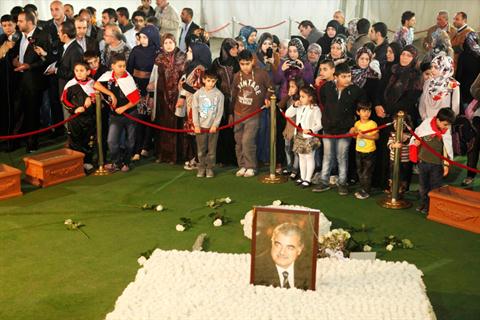
Birth of a Dynasty
After the spectacular assassination of its resourceful patriarch on 14 February 2005, the Hariri family was under pressure to put forward a new leader. The relatives of former Prime Minister Rafiq Hariri(b. 1944) settled the issue in about two months. On 20 April 2005, the family took advantage of the traditional forty days of mourning (arba‘in) to announce that Nazek Hariri (Rafiq Hariri’s widowed second spouse and mother of four of his seven children) was to oversee “all charitable and social institutions” while his son Saad was to “assume the historic responsibility and leadership of all national and political affairs”.
i
Among the direct family members, Bahia Hariri (Rafiq Hariri’s younger sister, b. 1952 and married to her paternal cousin Mustafa Hariri) enjoyed most political seniority. As a parliamentary representative for the family’s hometown of Saida since 1992 and as the erstwhile Director of the Hariri Foundation, she had witnessed from the inside how her brother’s political career unfolded. Moreover, on 28February 2005, Bahia Hariri had delivered an emotional speech in Parliament which had contributed to Omar Karami’s resignation as Prime Minister that same day. Following this intervention, her popularity had risen and several observers may have seen in her a potential first female Arab Prime Minister – although she herself soon contradicted such rumors. Though Bahia Hariri’s absence from the political scene following Saad’s designation was heavily debated, she has continued to be a major force in the family stronghold of Saida. She served as Minister of Education between July 2008 and November 2009.For his part, as Hariri’s eldest son, Bahaa ad-Din (b. 1967) was the natural heir to his father’s political authority. Contrary to his younger brother Saad ad-Din (b. 1970), Bahaa appeared as a strong and flamboyant personality. In the days following his father’s death, it was Bahaa – not Saad - who was presented as the main broker of the family’s interests. It was Bahaa who travelled to Riyadh in early lieutenants in public administration. Normal 0 false false false EN-US X-NONE X-NONE MicrosoftInternetExplorer4
Khazen History
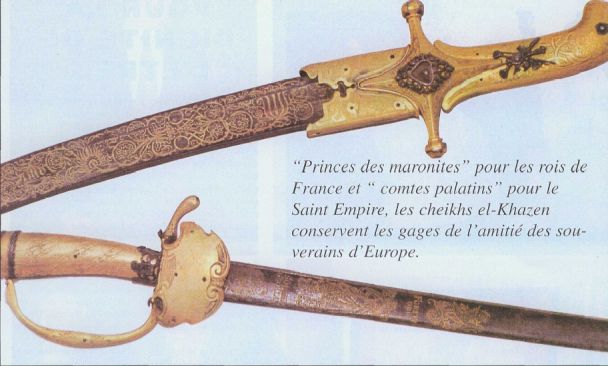

Historical Feature:
Churches and Monasteries of the Khazen family
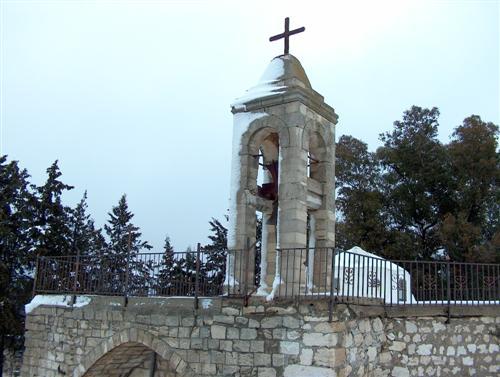
St. Anthony of Padua Church in Ballouneh
Mar Abda Church in Bakaatit Kanaan
Saint Michael Church in Bkaatouta
Saint Therese Church in Qolayaat
Saint Simeon Stylites (مار سمعان العامودي) Church In Ajaltoun
Virgin Mary Church (سيدة المعونات) in Sheilé
Assumption of Mary Church in Ballouneh
1 - The sword of the Maronite Prince
2 - LES KHAZEN CONSULS DE FRANCE
3 - LES MARONITES & LES KHAZEN
4 - LES MAAN & LES KHAZEN
5 - ORIGINE DE LA FAMILLE
Population Movements to Keserwan - The Khazens and The Maans
ما جاء عن الثورة في المقاطعة الكسروانية
ثورة أهالي كسروان على المشايخ الخوازنة وأسبابها
Origins of the "Prince of Maronite" Title
Growing diversity: the Khazin sheiks and the clergy in the first decades of the 18th century
Historical Members:
Barbar Beik El Khazen [English]
Patriach Toubia Kaiss El Khazen(Biography & Life Part1 Part2) (Arabic)
Patriach Youssef Dargham El Khazen (Cont'd)
Cheikh Bishara Jafal El Khazen
Patriarch Youssef Raji El Khazen
The Martyrs Cheikh Philippe & Cheikh Farid El Khazen
Cheikh Nawfal El Khazen (Consul De France)
Cheikh Hossun El Khazen (Consul De France)
Cheikh Abou-Nawfal El Khazen (Consul De France)
Cheikh Francis Abee Nader & his son Yousef
Cheikh Abou-Kanso El Khazen (Consul De France)
Cheikh Abou Nader El Khazen
Cheikh Chafic El Khazen
Cheikh Keserwan El Khazen
Cheikh Serhal El Khazen [English]
Cheikh Rafiq El Khazen [English]
Cheikh Hanna El Khazen
Cheikha Arzi El Khazen
Marie El Khazen